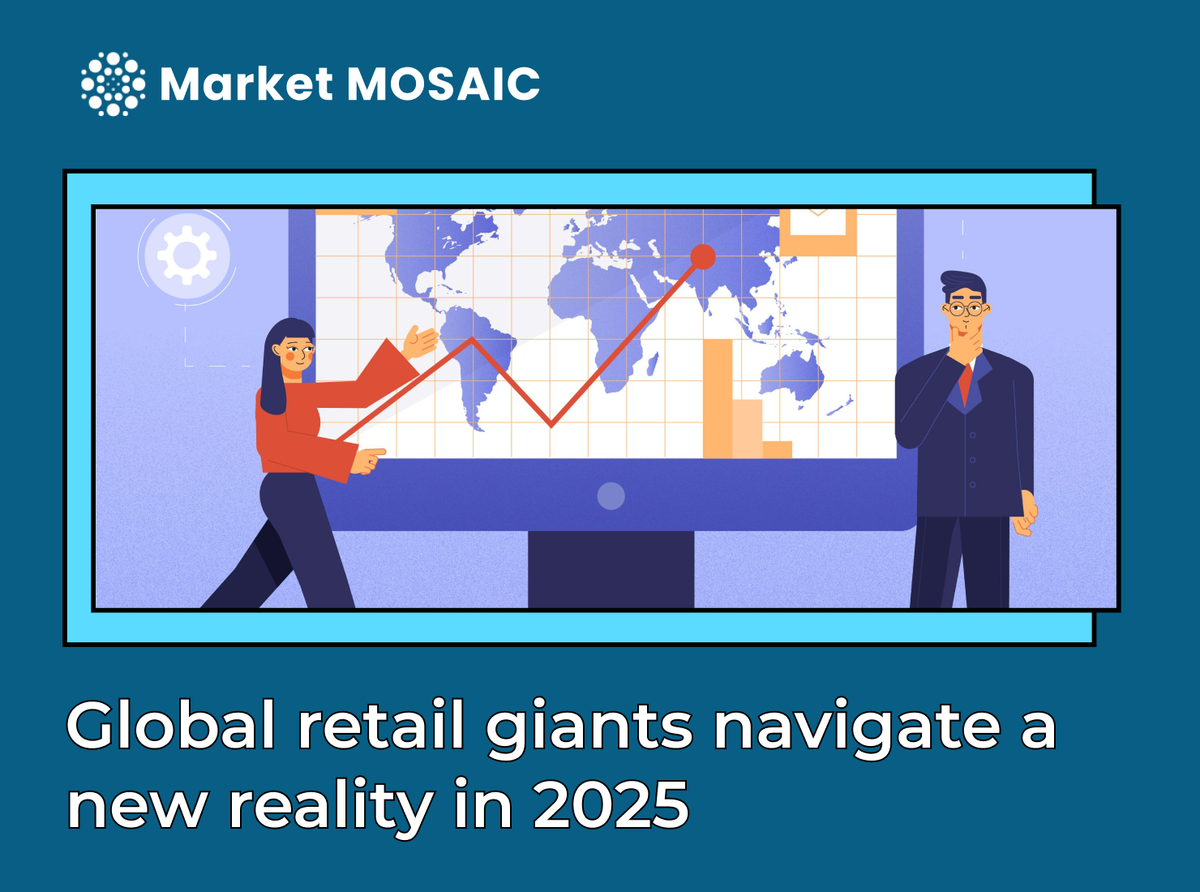Global retail giants navigate a new reality in 2025
In 2025, global retail giants like Walmart, Amazon, and Apple continue to dominate the revenue charts, but scale alone is no longer enough. The real battleground lies in how quickly these companies can adapt to shifting consumer values, tech disruption, and demographic headwinds.

In 2025, global retail is undergoing a transformation. Industry leaders like Walmart ($648.1 billion), Amazon ($638 billion), Apple ($383.3 billion), Nestlé ($105.5 billion), and LVMH ($89 billion) continue to command market share. But behind their dominance lies a more complex narrative one shaped by evolving consumer expectations, technological innovation, and rising macroeconomic uncertainty.
The consumer has changed permanently
The consumer, once predictable, has changed dramatically. Omnichannel shopping has become the new norm. Today’s buyers expect a seamless journey that begins on their smartphone, pivots to desktop, and often ends in-store or at curbside pickup. Retailers are racing to unify these touchpoints, as the demand for speed and convenience intensifies. Services like BOPIS (Buy Online, Pick Up In-Store) and one-click checkout are no longer perks; they're essentials.
Meanwhile, personalization has moved from “nice to have” to non-negotiable. Customers now expect tailored recommendations, targeted promotions, and individualized shopping experiences. Behind the scenes, AI and data analytics are powering this shift, enabling brands to anticipate what consumers want before they ask. This trend is particularly evident in digital-first players like Amazon, whose AI-driven recommendation engine contributes to over a third of its sales.
But consumers aren’t just shopping with their wallets, they’re shopping with their values. Environmental sustainability and ethical sourcing are at the heart of purchase decisions in 2025. From packaging materials to factory labor conditions, transparency is now a key driver of loyalty. Brands that demonstrate a clear commitment to ESG principles are gaining a competitive edge in a market increasingly defined by conscious consumption.
Technology remains a powerful enabler of change. E-commerce and mobile commerce have become core to retail strategies. Leading brands are investing heavily in responsive websites, mobile apps, and unified shopping carts to meet consumers where they are. Artificial intelligence and predictive analytics now inform everything from inventory management to real-time pricing. Augmented reality is transforming the in-store experience, offering virtual try-ons and product demos, while automation and robotics are quietly revolutionizing warehouse efficiency and fulfillment speed.
Riding the economic and geopolitical waves
Retailers are also navigating a tough economic landscape. Inflationary pressures and rising input costs from labor to logistics are squeezing margins. Market saturation has made it harder to stand out, pushing brands to differentiate through experience, innovation, and exclusive offerings. Supply chain volatility remains a persistent challenge. Global tensions, climate events, and logistical breakdowns continue to disrupt availability, forcing companies to rethink resilience and sourcing strategies.
Labor, too, remains a pain point. Finding and retaining skilled talent particularly in frontline and tech roles has become more competitive, compelling brands to invest in workforce development and flexible work models.
What winning looks like in 2025
Success in 2025 looks markedly different from years past. Winning retailers are those who have embraced an omnichannel mindset, where the boundary between digital and physical retail has all but disappeared. They use data to deliver hyper-personalized service and marketing. They operate with agility, responding quickly to market shifts and consumer feedback. And they’ve built sustainability into their operations, not just as a CSR effort, but as a core business value.
Strategic partnerships are playing a larger role as well. Brands are teaming up with logistics startups, influencer communities, and tech innovators to create smarter, faster, and more localized shopping experiences.
Looking forward, global retail leaders must continue to evolve or risk losing their footing. The winners will be those who recognize that consumer loyalty in 2025 is fluid and earned through relevance, convenience, purpose, and innovation. The path forward lies in blending operational excellence with deep human insight and turning retail from a transaction into a relationship.





